Active Spattering at Fissures, Sulfur Dioxide Plumes Accumulate in Cloud Deck
The Hawaiian Volcano Observatory reports that several fissures that were active and producing spatter this morning, Wednesday, May 16, 2018. According to the HVO, the flow from Fissure 17 has not advanced since yesterday. The view uprift from the Hawaiian Volcano Observatory overflight this morning (at 8:25 a.m.) showed calm winds with sulfur dioxide plumes rising from the fissures along the rift and accumulating in the cloud deck.
At 10:30 a.m., the Hawaiian Volcano Observatory reports that occasional bursts of ash are coming from Halemaʻumaʻu Crater, causing cause ash to fall downwind across portions of Lower Puna to include Volcano Village and Kaʻū District. Only trace dusting of ash is currently visible on property.
The National Weather Service has cancelled the Ashfall Advisory as of 8:33 a.m. Volcanic emissions from Halemaʻumaʻu Crater have decreased since Tuesday evening. The NWS could reissue the advisory as conditions warrant.
Volcanic gas emissions remain elevated throughout the area downwind of the vents in lower Puna. An interruption in trade winds today means that Lower Puna, Volcano Village and surrounding areas, such as the Big Island North, South and Interior, may experience varying levels of vog and sulfur dioxide exposure. The Hawaiʻi Fire Department reports that air quality is still condition RED around fissures in the southeast area of Lanipuna Gardens and surrounding farm lots on Pohoiki Road.
As a precautionary measure, residents of lower Puna are advised to be on the alert in the event of possible gas emissions and volcanic eruption.
As of midnight last night, there were 202 residents at the Pāhoa and 41 residents at the Keaʻau shelter.
For up to date information go to http://www.hawaiicounty.gov/2018-lava-map
- For the latest images and information from the Hawaiʻi Volcano Observatory: https://volcanoes.usgs.gov/volcanoes/kilauea/multimedia_chronology.html
HVO has increased the Aviation Color Code to Red due to increased ash emission from Kilauea. Ash has been rising nearly continuously from the vent and drifting downwind to the southwest. Ashfall and vog have been reported along Highway 11 to Pahala. At any time, activity may increase the intensity of ash production.
Due to the volcanic activity, the following are issued:
- Volcano School of Arts and Sciences will be closed today (5/16/18).
- Hawaiʻi Fire Department reports that air quality is condition RED around fissures in the southeast area of Lanipuna Gardens and surrounding farm lots on Pohoiki Road. Condition RED means immediate danger to health so take action to limit further exposure. Severe conditions may lead to symptoms such as eye and nose irritation, and coughing. Sulfur Dioxide (SO2) gas is especially dangerous for the elderly, children/babies and people with respiratory problems.
- The Hawaiʻi Department of Transportation announced that Highway 130 is open beyond Mālama Street for local residents only. The Hawaiʻi Police Department reports no large trailers or heavy equipment will be allowed over the metal plates.
- Highway 132 is closed at Pohoiki Road intersection and a checkpoint is located on Highway 130 by Pāhoa High School. Only local traffic allowed beyond all roadblocks.
- As a precautionary measure, residents of lower Puna are advised to be on the alert in the event of possible gas emissions and volcanic eruption. Because there may be little to no advance notice to evacuate, you should be prepared to evacuate at short notice. Take this time to prepare.
- If you evacuate voluntarily, the Pāhoa Community Center and Kea’au Community Center are open. Food will be provided and the shelters are pet-friendly. This is a precautionary message. We want everyone in the Lower Puna area to be ready, and to remain safe.
County, State and Federal partners continue to monitor the situation. You will be informed of any conditions that affect your safety.
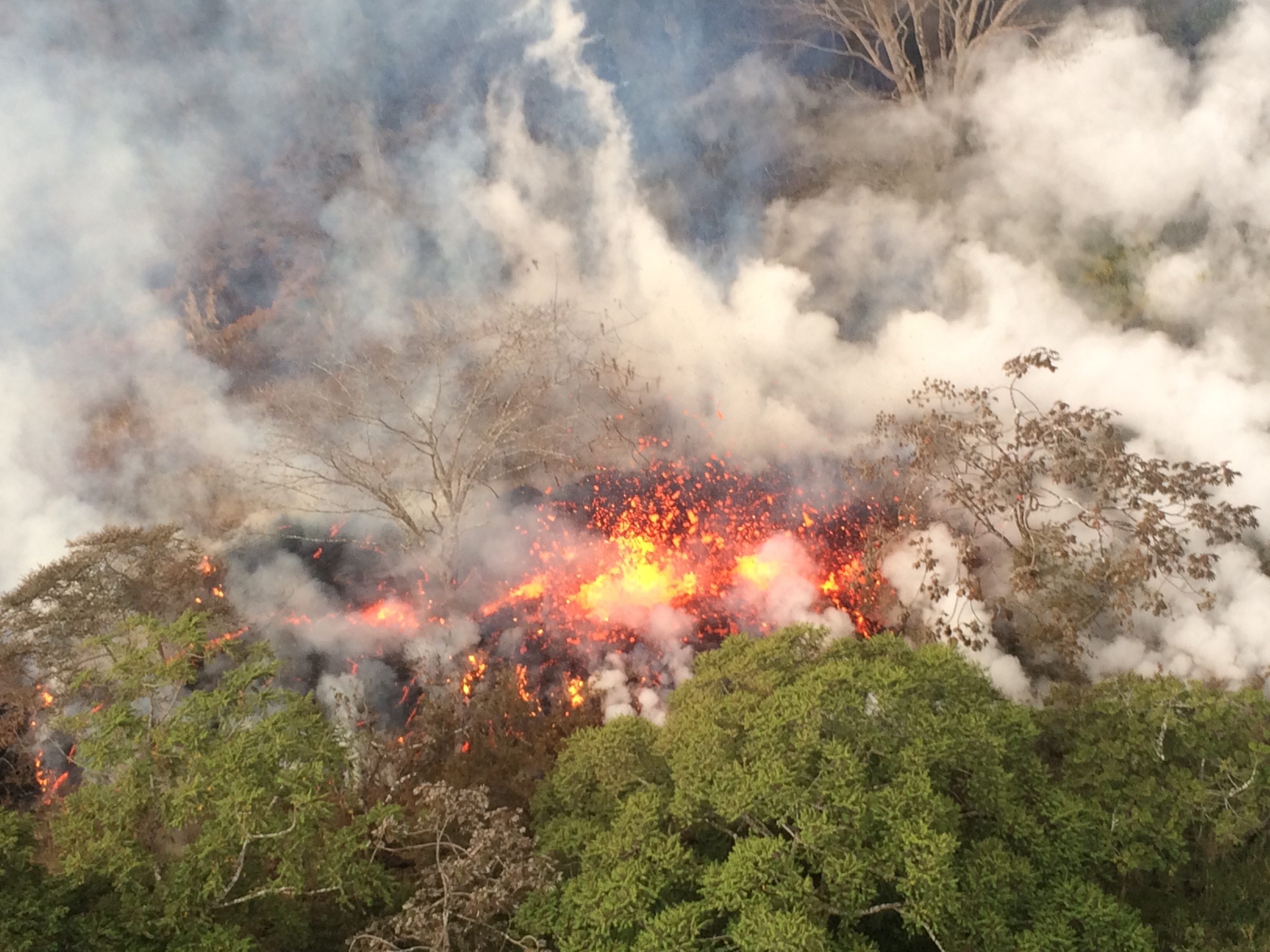
Lava spattering area from an area between fissures 16 and 20 photographed at 8:20 a.m. on Wednesday, May 16, 2018. PC: US Geological Survey
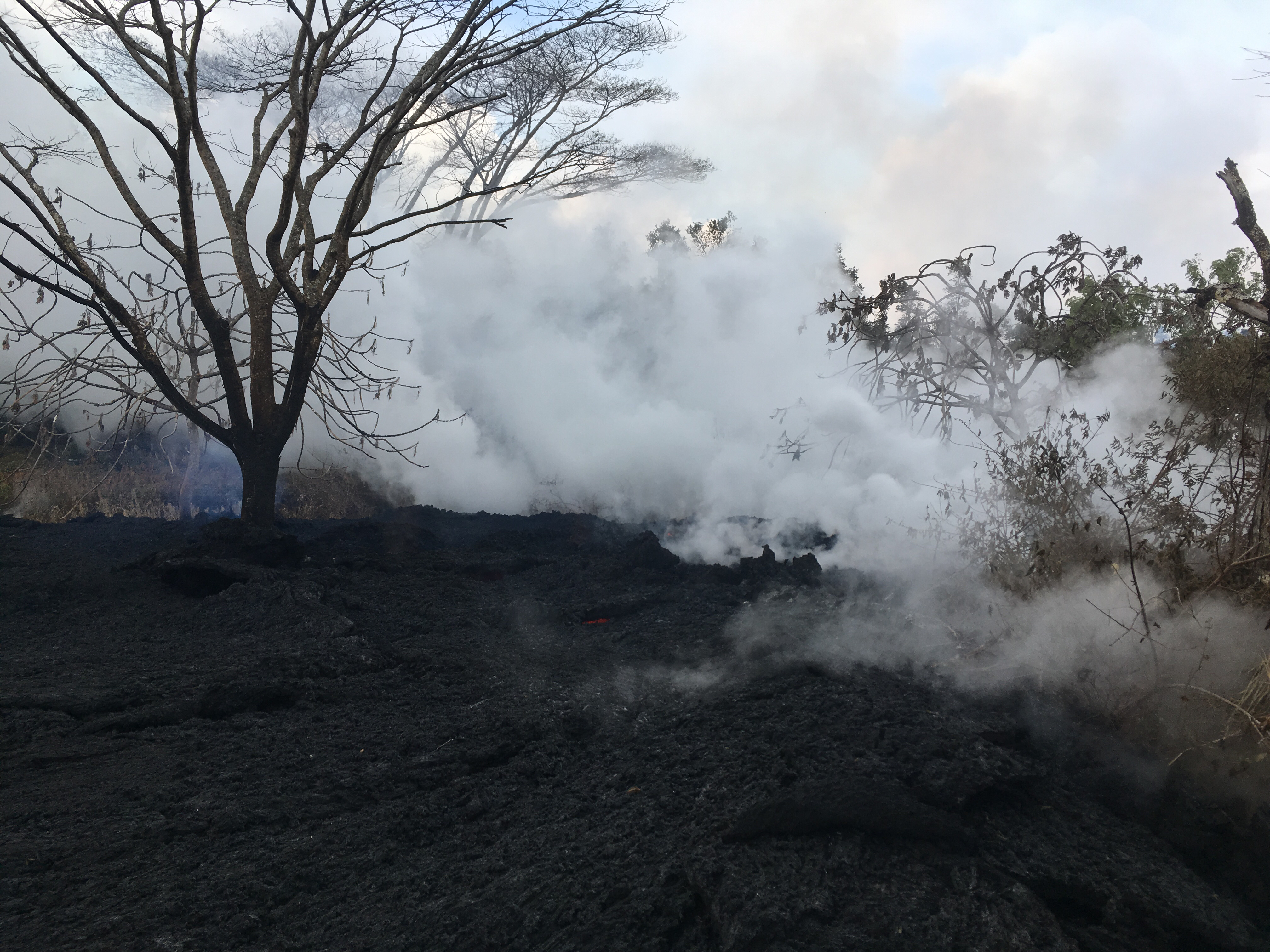
Same area between fissures 16 and 20 at 8:33 a.m. on Wednesday, May 16, 2018. By the time geologists reached the site on foot, the spattering had died down and they were only hearing gas rushing sounds. PC: US Geological Survey.
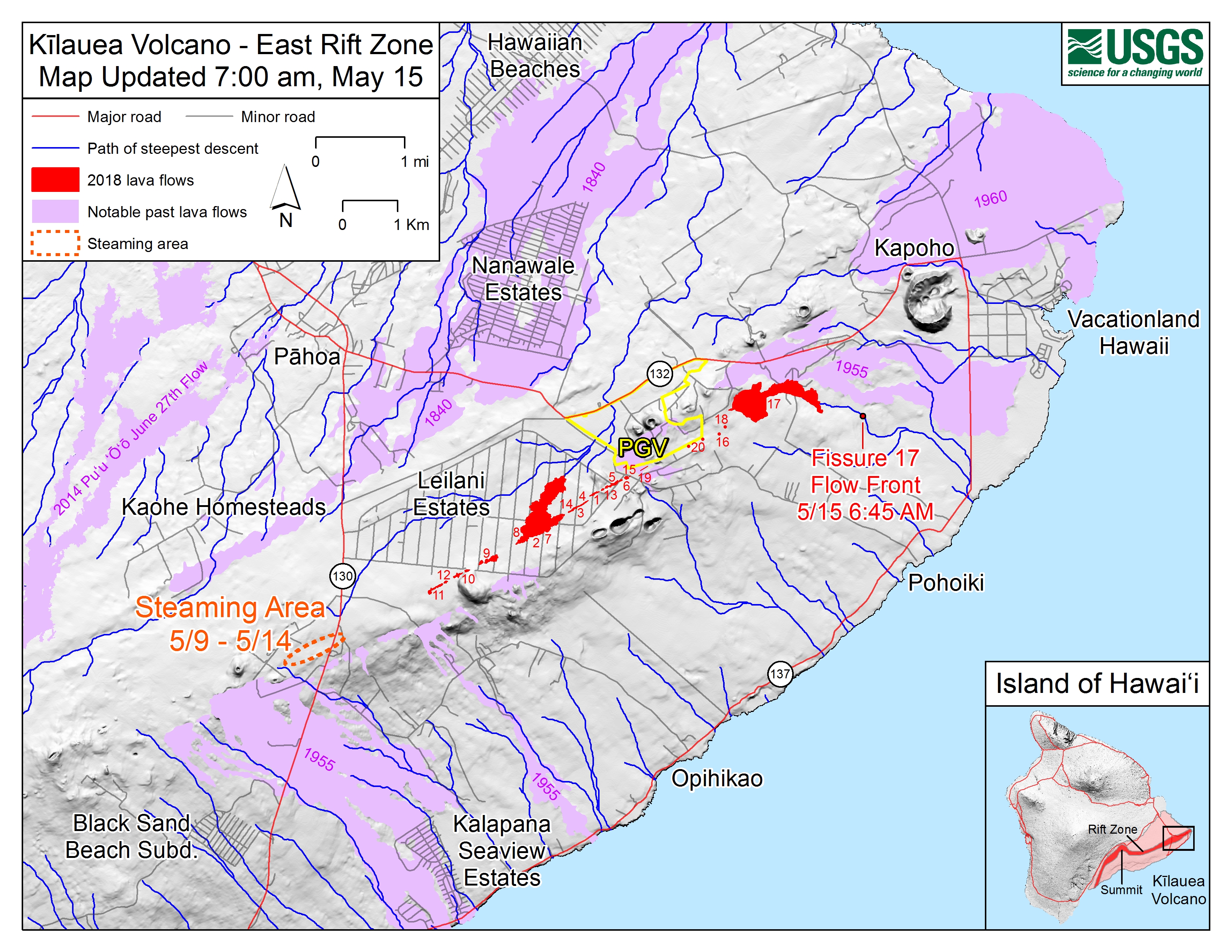
Map as of 6:45 a.m. HST, May 15, shows the location of the ‘a’ā lava flow spreading from fissure 17; the flow front at the time is shown by the small red circle with label. The flow is following well a path of steepest descent (blue line), immediately south of the 1955 ‘a’ā flow boundary. Shaded purple areas indicate lava flows erupted in 1840, 1955, 1960, and 2014-2015.

View uprift from the Hawaiian Volcano Observatory overflight this morning at 8:25 a.m. Note sulfur dioxide plumes rising from the fissures along the rift and accumulating in the cloud deck. Winds are calm today, Wednesday, May 16, 2018. PC: US Geological Survey
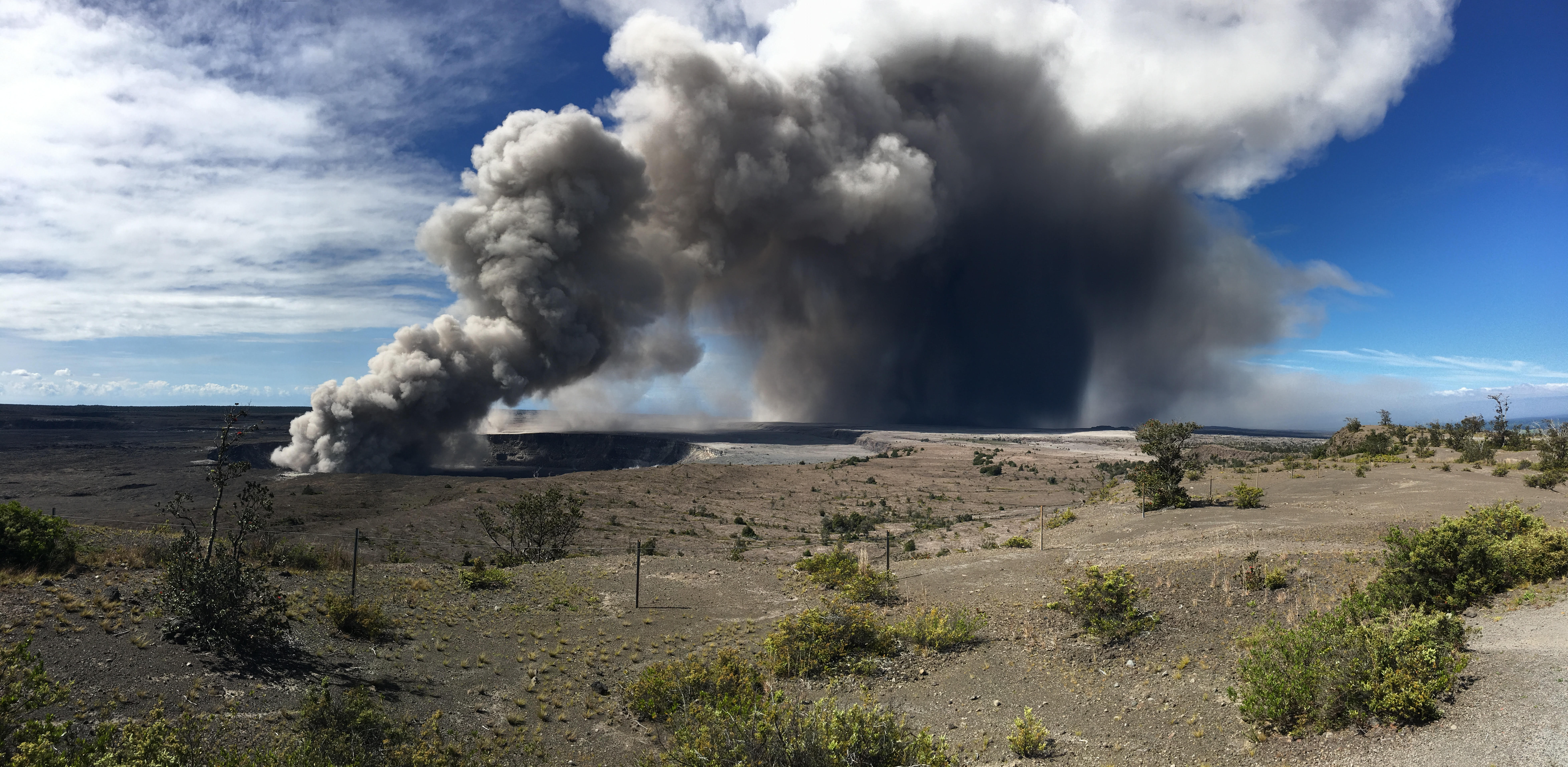
Activity at Halema‘uma‘u crater increased on Tuesday morning to include the nearly continuous emission of ash with intermittent stronger pulses that form occasional higher plumes 1-2 kilometers (3,000 to 6,000 feet) above the ground. This photo shows the ash plume at about 9 a.m. HST on May 15, 2018. Tradewinds this morning are blowing the ash generally to the southwest toward the Ka`u Desert. The dark area to the right of the ash column rising from the Overlook crater is ash falling from the ash cloud to the ground. PC: US Geological Survey
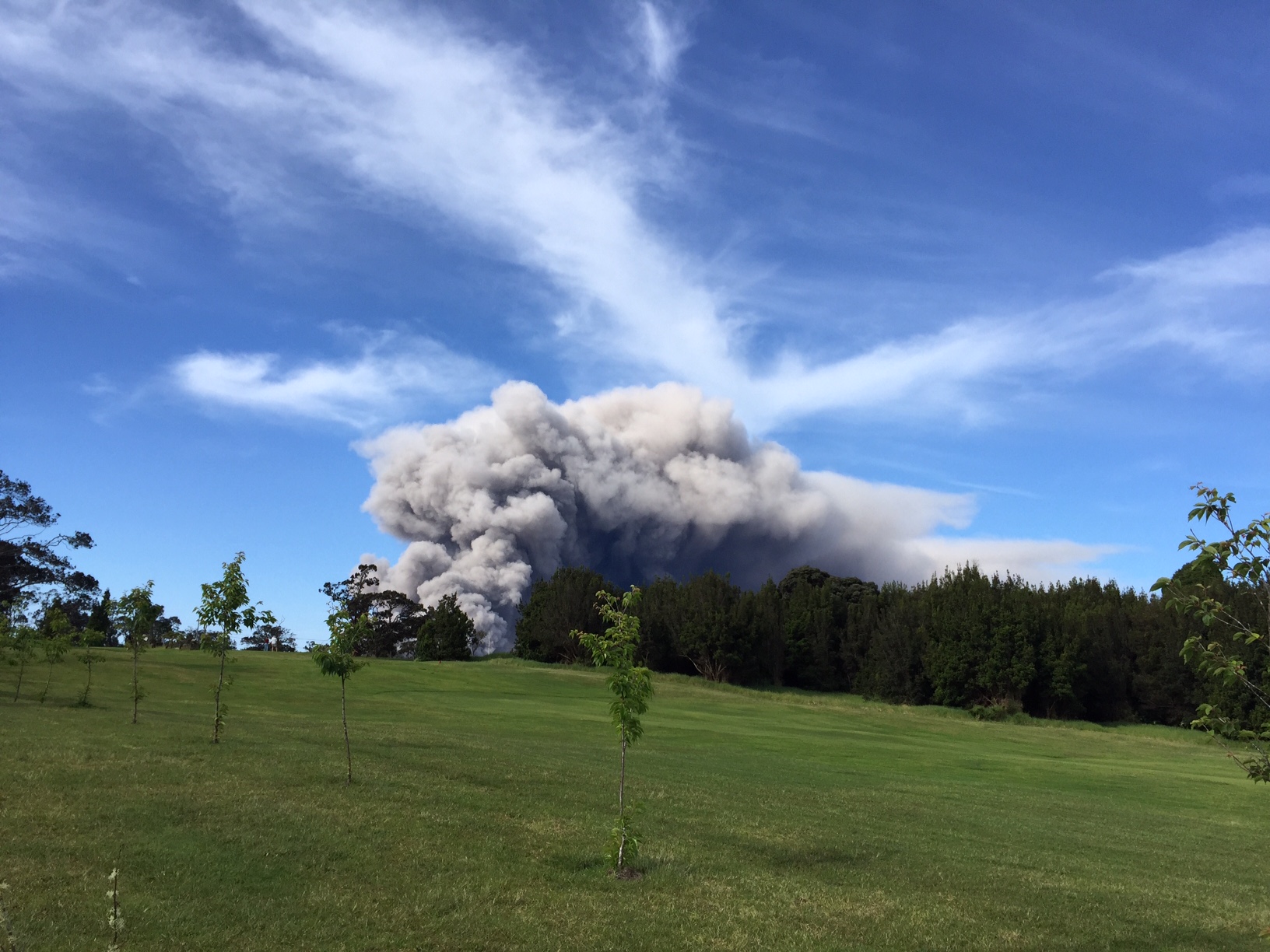
Ash plume viewed from the Volcano Golf Course near Volcano, Hawai‘i. This view is nearly due north of the Halema‘uma‘u crater. PC: 5.15.18 US Geological Survey
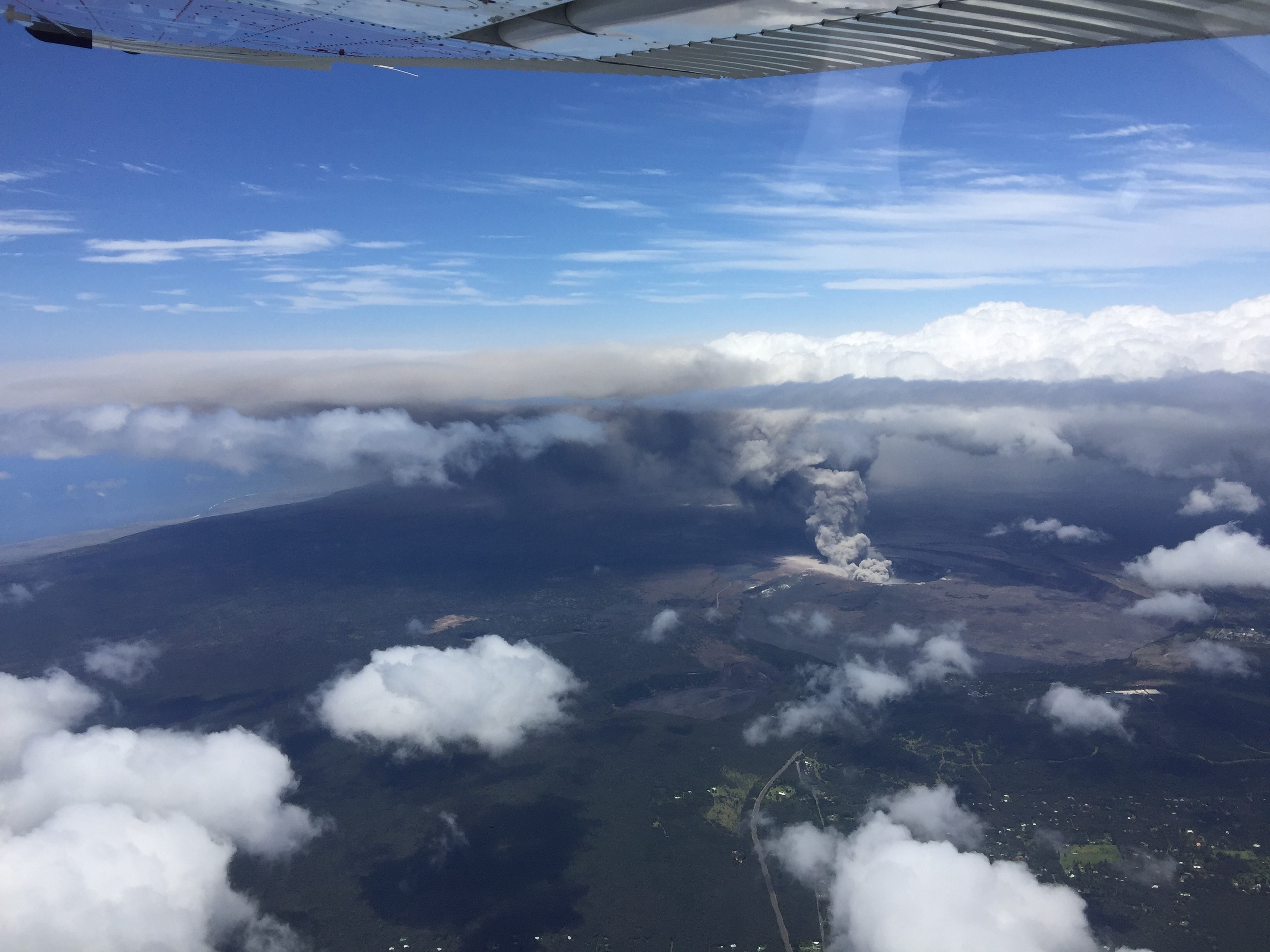
At 11:43 HST on Tuesday, May 15, 2018, Civil Air Patrol flight CAP20 reported plume tops at about 9,500 ft with the dispersed plume rising as high as 11,000 ft. The CAP mission was launched from Hilo in support of Hawai‘i County Civil Defense and USGS Hawaiian Volcano Observatory response to the ongoing eruption. Ash from this plume was reported falling on communities downwind. Information on ash hazards and how to prepare can be found here: https://volcanoes.usgs.gov/volcanic_ash/ . PC: US Geological Survey
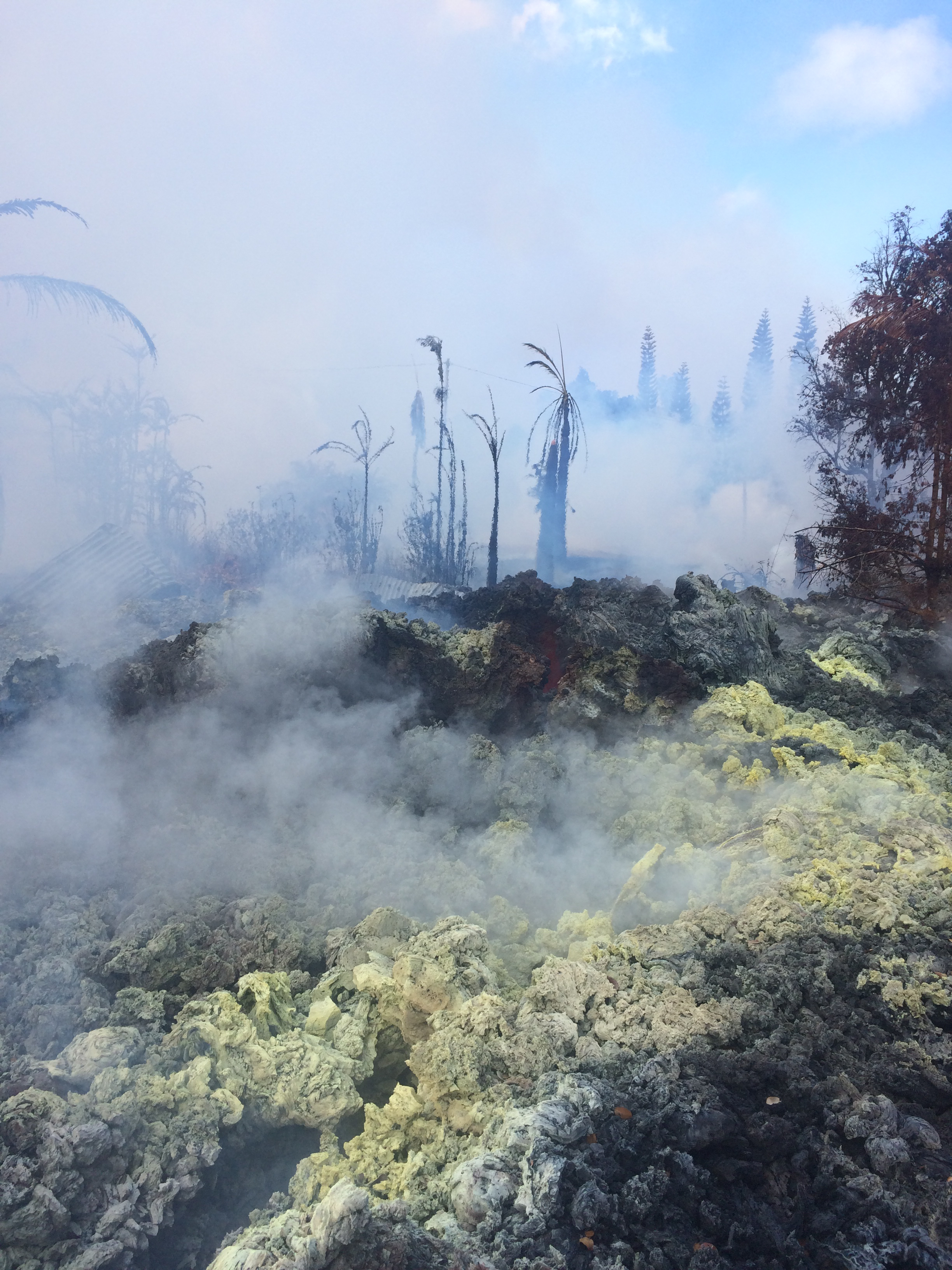
Incandescence observed at Fissure 14 around 10:30 a.m. HST on Tuesday, May 15, 2018. Pulsing, gas-rushing sounds could be heard coming from the crack. Yellow sulfur deposits appear on the crack margins. PC: US Geological Survey
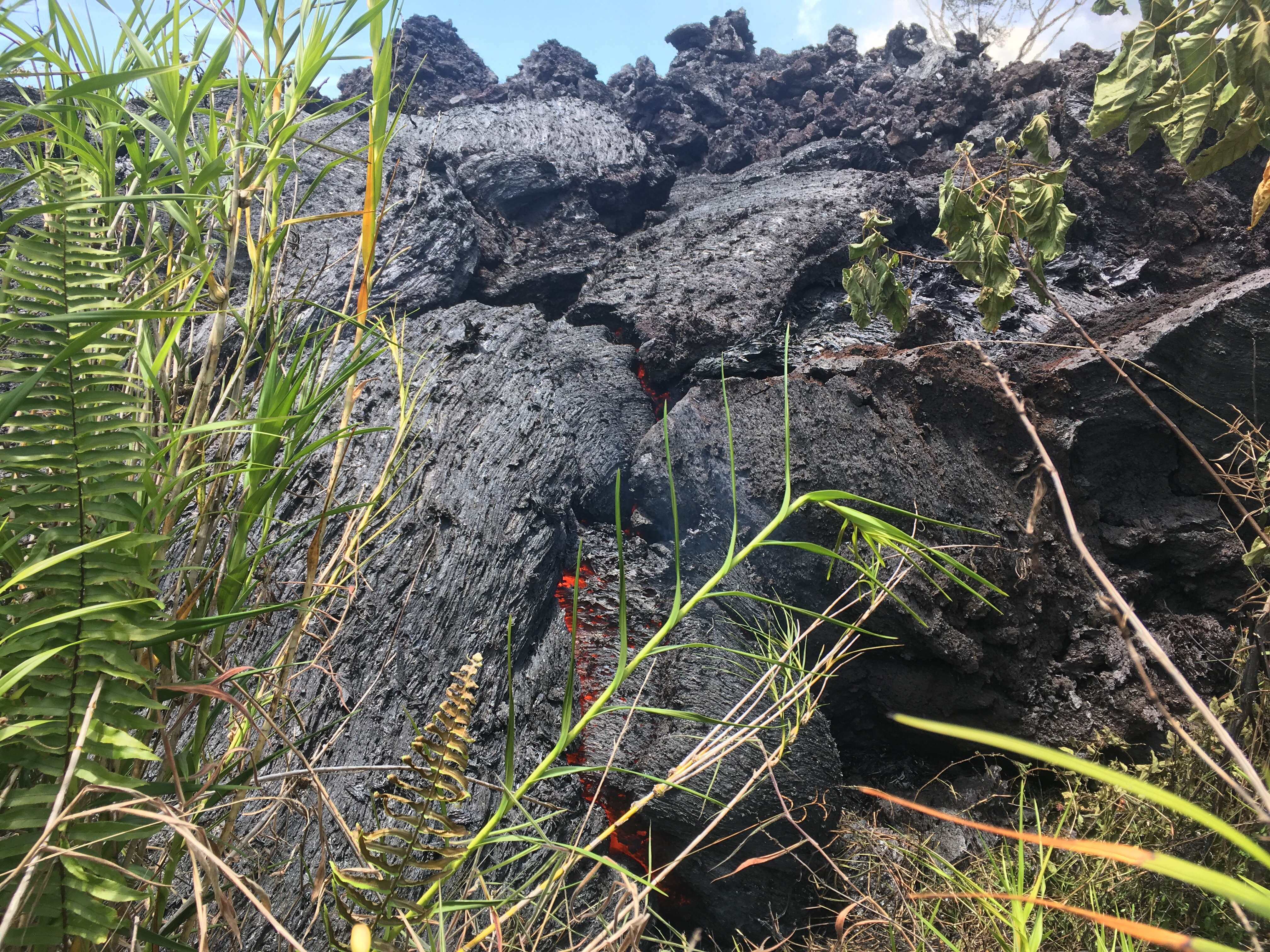
Highly viscous (sticky) lava oozes from the edge of the ‘a‘ā flow spreading slowly from fissure 17. PC: US Geological Survey 5.15.18
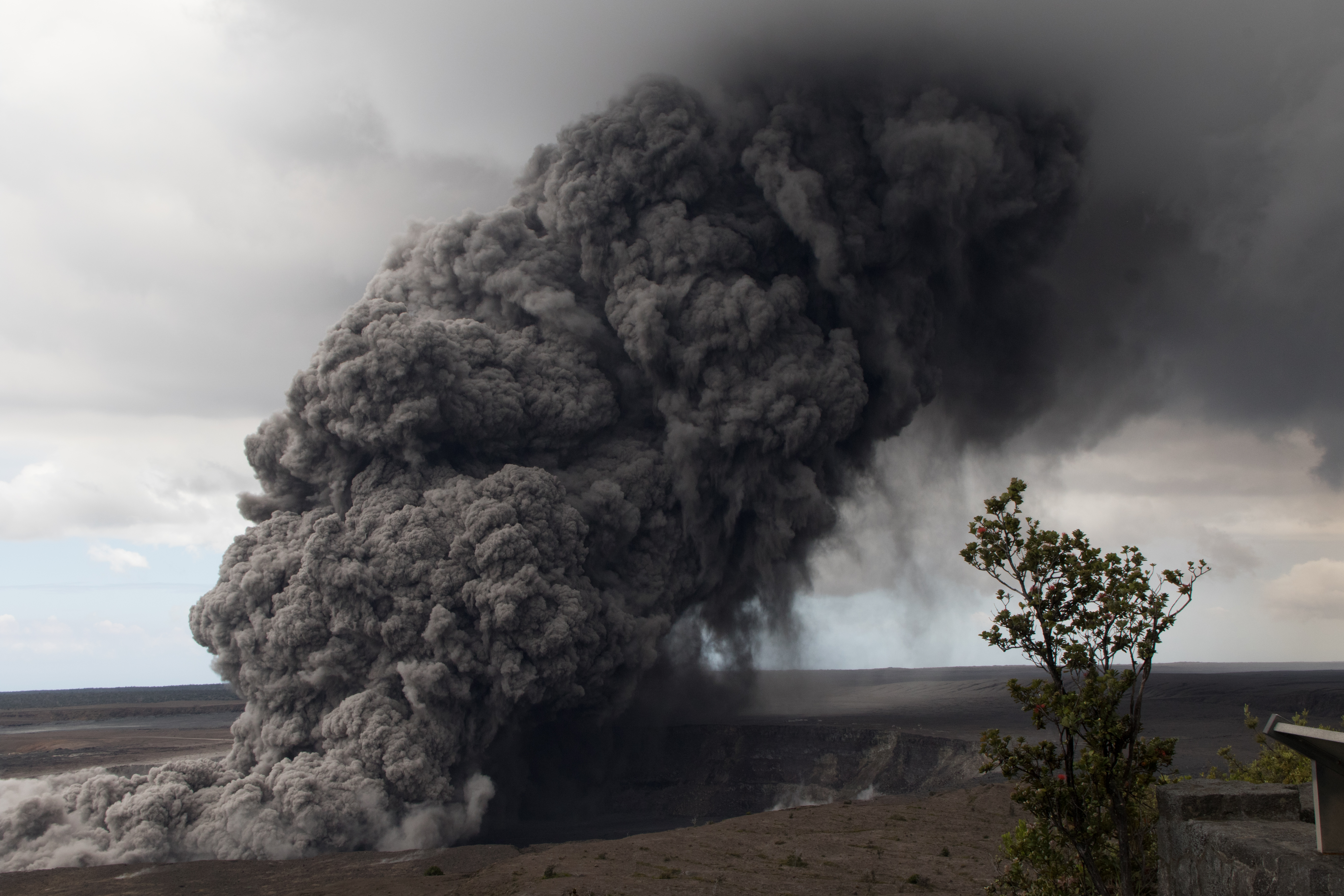
At 11:05 a.m. HST on Tuesday, May 15, 2018. Photograph from the Jaggar Museum, Hawai`i Volcanoes National Park, captures an ash plume rising from the Overlook crater. Ash falling from the plume can be seen just to the right side (and below) the plume. PC: US Geological Survey
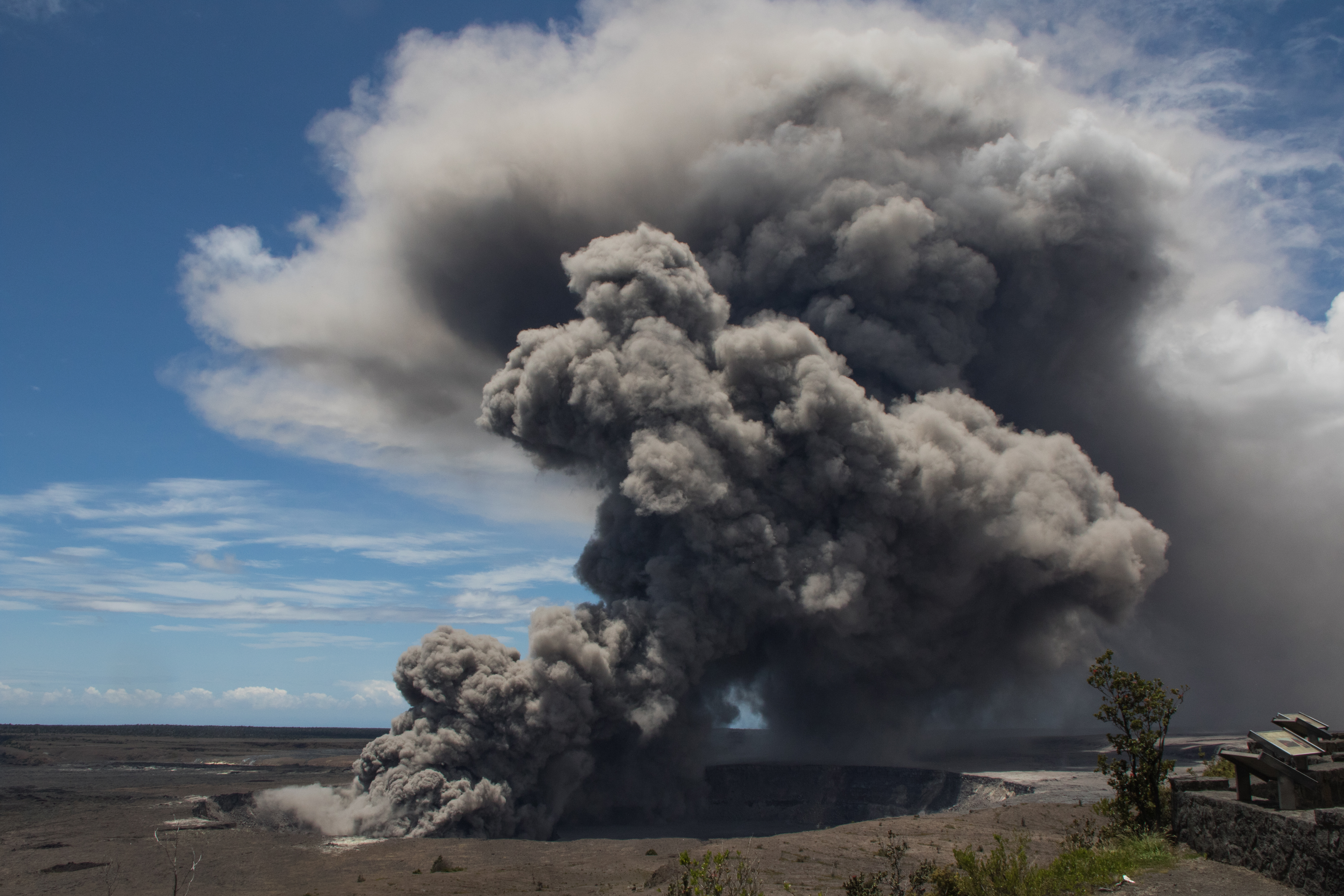
At 1:38 p.m. HST on Tuesday, May 15, 2018, another dark ash plume rose from the Overlook crater. During a flight earlier today by the Civil Air Patrol, the height of the ash plumes near the crater rose to more than 3 km (9,800 ft) above sea level, and downwind the plumes continued to rise to about 3.5 km (11,500 ft) above sea level. PC: US Geological Survey
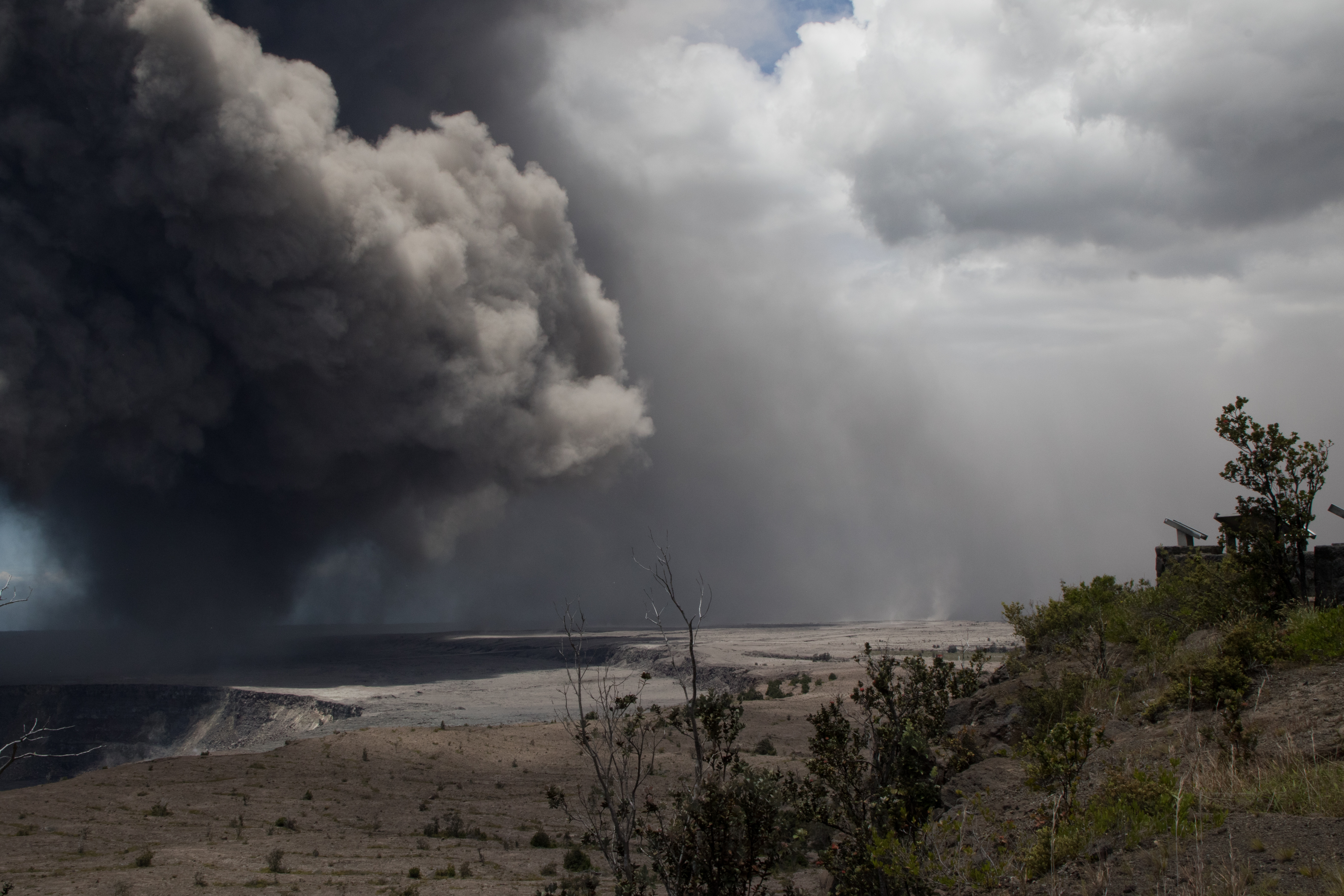
At 1:38 p.m. HST on Tuesday, May 15, 2018, ash falls from the plume southwest from Halema‘uma‘u crater onto the Kau desert. The northeast tradewinds were persistent today at the summit of Kīlauea Volcano, so ash was only blown southwest. PC: US Geological Survey
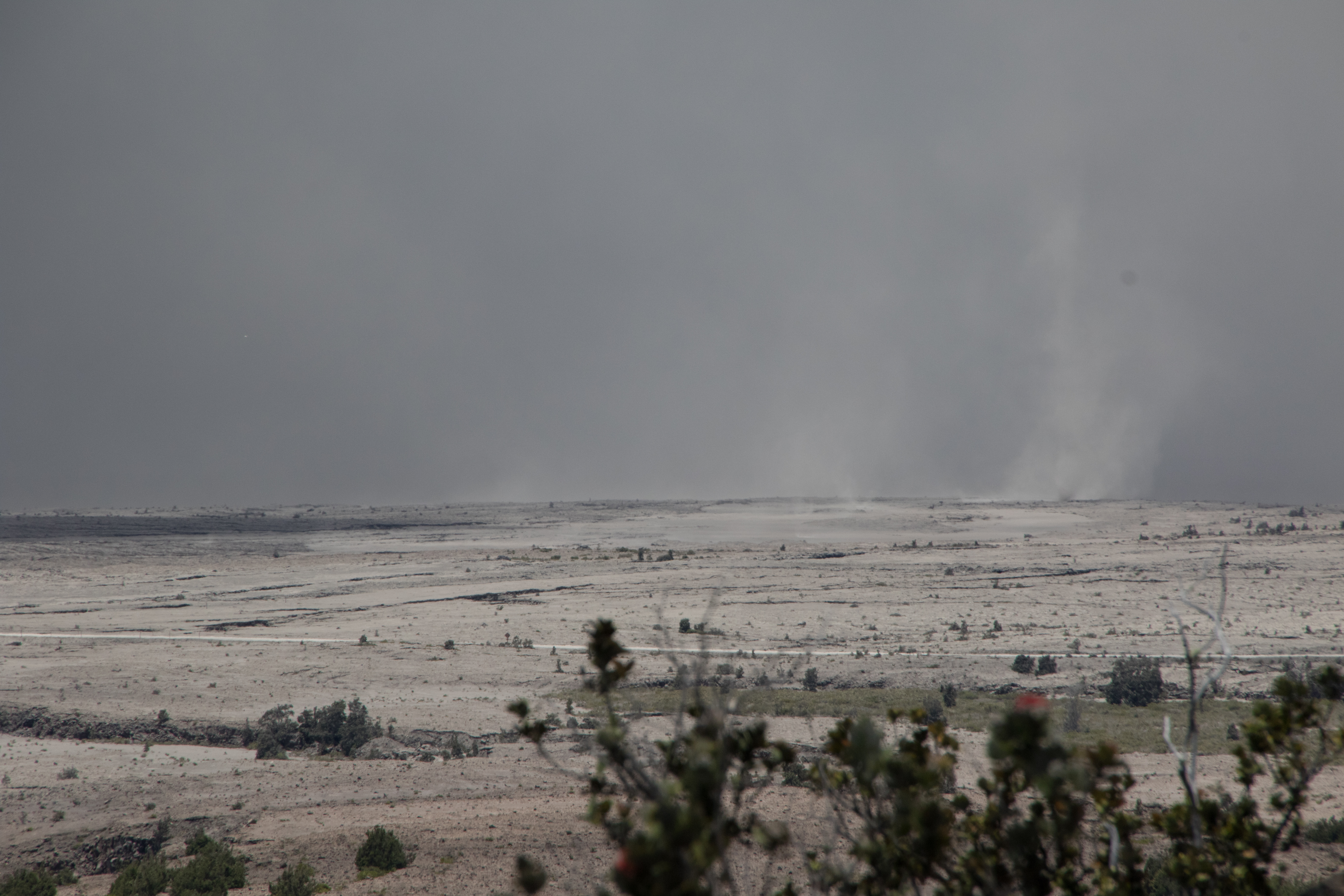
At 1:38 p.m. HST on Tuesday, May 15, 2018. A telephoto photo from the Hawaiian Volcano Observatory looking toward the southwest shows gray ash blanketing the Kau Desert landscape. PC: US Geological Survey.












